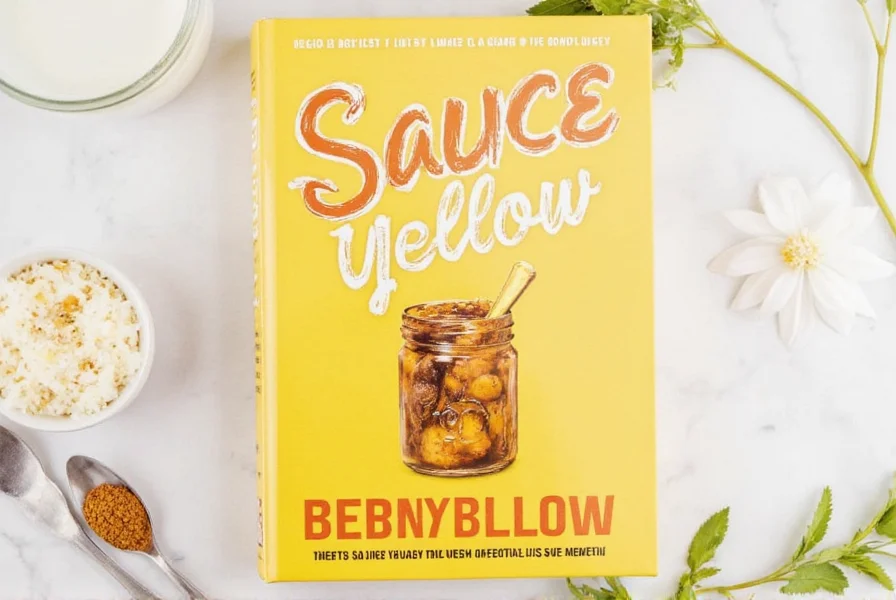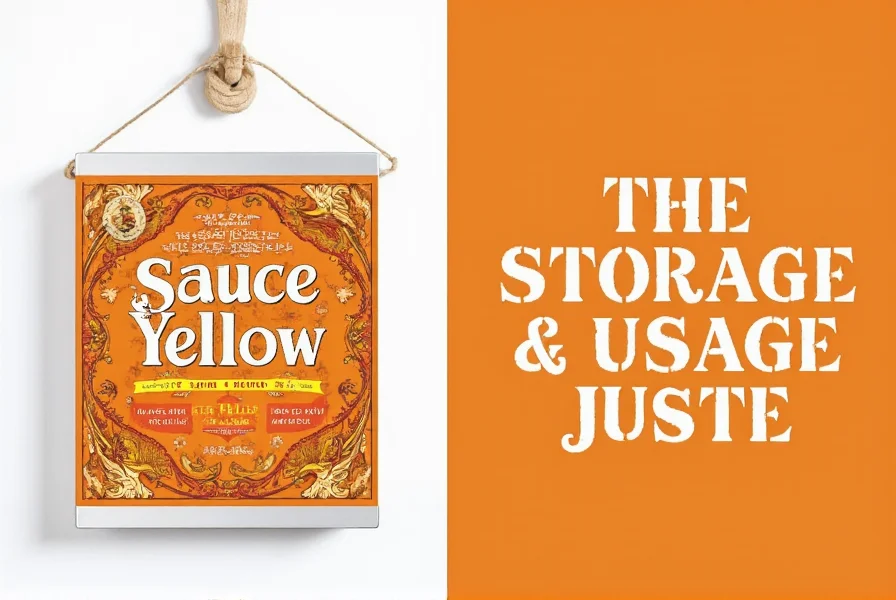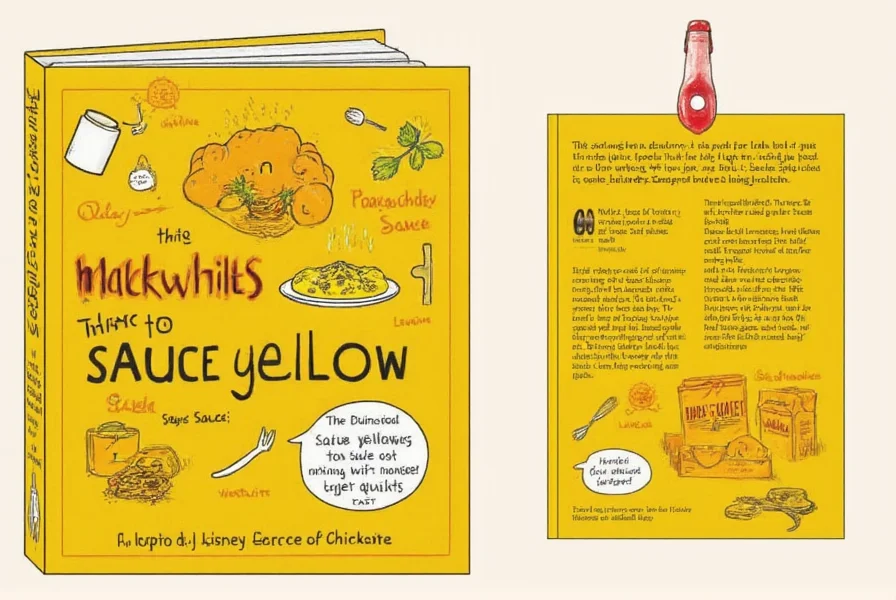Table of Contents
Introduction to Turmeric
Turmeric, a vibrant and versatile spice derived from the Curcuma longa plant, is renowned for its golden hue and earthy flavor. This natural pigment is a cornerstone of Indian, Middle Eastern, and Southeast Asian cuisines, where it enhances both the visual appeal and nutritional profile of dishes. Unlike the misconception of "sauce yellow" as a standalone spice, turmeric is a scientifically recognized ingredient with well-documented culinary and health applications.
Rich in curcumin—the active compound responsible for its color and health benefits—turmeric is used in everything from curries and rice dishes to smoothies and medicinal teas. This guide provides evidence-based storage, usage, and purchasing advice to help you maximize turmeric's potential in your kitchen.
Historical and Scientific Evolution
Understanding turmeric's journey reveals critical context for its modern applications. Archaeological evidence confirms its use in the Indus Valley Civilization around 2500 BCE, with documented medicinal applications in Ayurvedic texts by 500 BCE. The pivotal isolation of curcumin in 1910 (Journal of the American Chemical Society) enabled modern research, while clinical validation of its anti-inflammatory properties accelerated after 1995 when human trials demonstrated measurable biomarker effects. This evolution explains why contemporary usage differs significantly from traditional preparations—modern science shows optimal absorption requires specific co-factors absent in historical consumption patterns.

Turmeric Storage Hacks
Proper storage preserves turmeric's potency, color, and flavor. Follow these science-backed methods:
- Use opaque, airtight containers: Glass or ceramic jars with tight seals block light and moisture, preventing curcumin degradation. Avoid plastic, which can absorb odors and leach chemicals.
- Store in cool, dark places: Keep away from heat sources and sunlight. Ideal storage temperature is below 70°F (21°C), such as a pantry or cupboard.
- Include silica gel packets: For long-term storage, add food-grade desiccants to absorb humidity and prevent clumping.
- Label with purchase date: Turmeric powder retains peak quality for 1-2 years when stored properly. Mark containers to track freshness.
- Separate from strong-smelling spices: Turmeric easily absorbs odors. Store it away from cumin, coriander, or garlic powder.

Turmeric Usage Tips
Maximize turmeric's flavor and health benefits with these expert techniques:
- Add with fat and black pepper: Curcumin is fat-soluble and poorly absorbed alone. Combine with healthy fats (coconut oil, ghee) and piperine-rich black pepper (1/4 tsp per tsp turmeric) to boost absorption by 2000%.
- Heat for optimal release: Cooking turmeric in oil or water activates its compounds. Add early in cooking for curries, soups, or stews to allow full flavor development.
- Start with small amounts: Begin with 1/4 tsp per serving and adjust. Overuse can cause bitterness or yellow staining.
- Use in golden milk: Mix 1 tsp turmeric powder with warm milk, ginger, cinnamon, and honey for an anti-inflammatory beverage.
- Prevent staining: Wear gloves when handling fresh turmeric. Clean surfaces immediately with vinegar or baking soda paste.
Contextual Application Boundaries
Turmeric's effectiveness varies significantly by application context. Clinical studies confirm its anti-inflammatory benefits are only achievable when consumed with piperine (black pepper) and lipids—dietary turmeric alone provides negligible curcumin absorption (NCBI, 2017). In culinary applications, it excels in savory dishes with robust flavors (curries, stews) but fails in delicate preparations like seafood or light sauces where its earthy bitterness dominates. Crucially, its staining properties make it unsuitable for porous surfaces or light-colored fabrics without immediate treatment—unlike synthetic dyes, curcumin bonds permanently with organic materials. These boundaries explain why "golden milk" works while turmeric-infused salad dressings often disappoint.

Buying Guide for Turmeric
Choose high-quality turmeric with these criteria:
| Product Type | Key Features | Advantages | Best For | Recommended Brands |
|---|---|---|---|---|
| Organic Turmeric Powder | 100% pure, lab-tested for curcumin content (min. 3-5%) | Free from additives, consistent color, high bioavailability | Everyday cooking, baking, smoothies | Frontier Co-op, Simply Organic |
| Fresh Turmeric Root | Smooth skin, firm texture, vibrant orange interior | Higher essential oil content, fresher flavor | Juices, teas, raw applications | Local farmers' markets, Whole Foods |
| Curcumin Extract Supplements | Standardized to 95% curcuminoids, with piperine | Therapeutic doses for health benefits | Supplemental use, inflammation management | Thorne Research, NOW Foods |
Always check for third-party certifications (USDA Organic, Non-GMO Project) and avoid products with fillers like rice flour or artificial colors. For culinary use, prioritize whole-food sources over supplements unless advised by a healthcare professional.
Frequently Asked Questions About Turmeric
What is turmeric?
Turmeric is a rhizome (root) from the Curcuma longa plant, dried and ground into powder. It's not a "sauce yellow" but a scientifically recognized spice with over 2,500 years of use in Ayurvedic medicine and global cuisine. Its active compound, curcumin, provides anti-inflammatory and antioxidant properties.
Is turmeric the same as saffron?
No. Saffron comes from crocus flowers and is the world's most expensive spice by weight. Turmeric is derived from roots and is affordable. While both impart yellow color, saffron has a floral, honey-like flavor and is used sparingly in dishes like paella. Turmeric has earthy, slightly bitter notes and is used in larger quantities for curries and rice.
How long does turmeric last when stored properly?
When kept in airtight containers away from light and moisture, turmeric powder maintains peak quality for 1-2 years. Fresh turmeric root lasts 2-3 weeks refrigerated or 6 months frozen. Color may fade over time, but flavor remains stable if stored correctly.
Can I make my own turmeric blend?
Yes. For a basic curry blend, mix 2 tbsp turmeric powder with 1 tbsp each of cumin, coriander, and ginger. Add 1 tsp black pepper to enhance curcumin absorption. Store in an opaque container for up to 6 months. Avoid adding fillers like rice flour.
Why does turmeric stain surfaces and hands?
Turmeric contains curcumin, a potent natural dye. To prevent stains: wear gloves when handling fresh roots, use glass or stainless steel bowls, and clean spills immediately with vinegar or baking soda paste. For fabrics, apply hydrogen peroxide before washing.
What dishes work best with turmeric?
Turmeric enhances Indian curries, Thai soups, Middle Eastern rice dishes, and Western applications like roasted vegetables, salad dressings, and golden milk. It pairs well with cumin, ginger, garlic, and black pepper. Use 1/4-1 tsp per serving for optimal flavor without bitterness.
Is turmeric healthy?
Yes. Clinical studies confirm curcumin's anti-inflammatory, antioxidant, and neuroprotective properties. It may help manage arthritis, support brain health, and reduce oxidative stress. For therapeutic effects, combine with black pepper and healthy fats. Consult a doctor before using high doses for medical conditions.
Conclusion
Turmeric is a scientifically validated spice with proven culinary and health benefits, not a fictional "sauce yellow." By following evidence-based storage, usage, and purchasing practices, you can harness its full potential in everyday cooking. Whether you're making a simple rice dish or a therapeutic golden milk latte, turmeric's vibrant color and health properties make it a kitchen essential.
Remember: Quality matters. Choose certified organic turmeric with verified curcumin content for the best results. Always pair it with black pepper and healthy fats to maximize absorption and health benefits.












 浙公网安备
33010002000092号
浙公网安备
33010002000092号 浙B2-20120091-4
浙B2-20120091-4